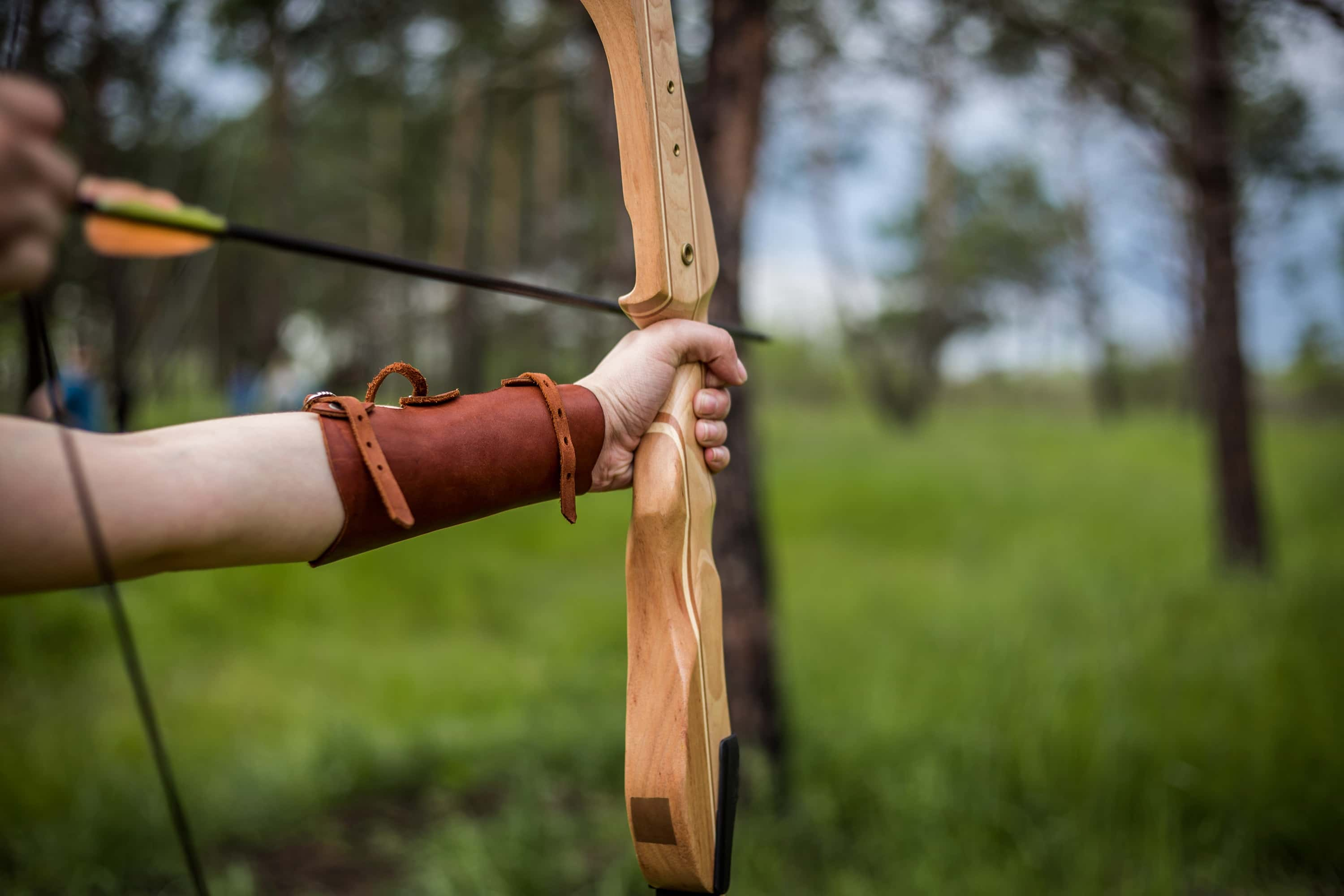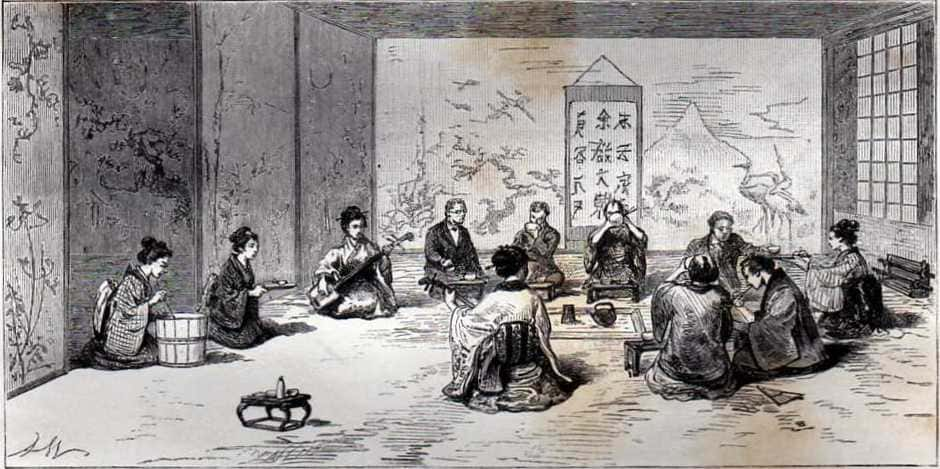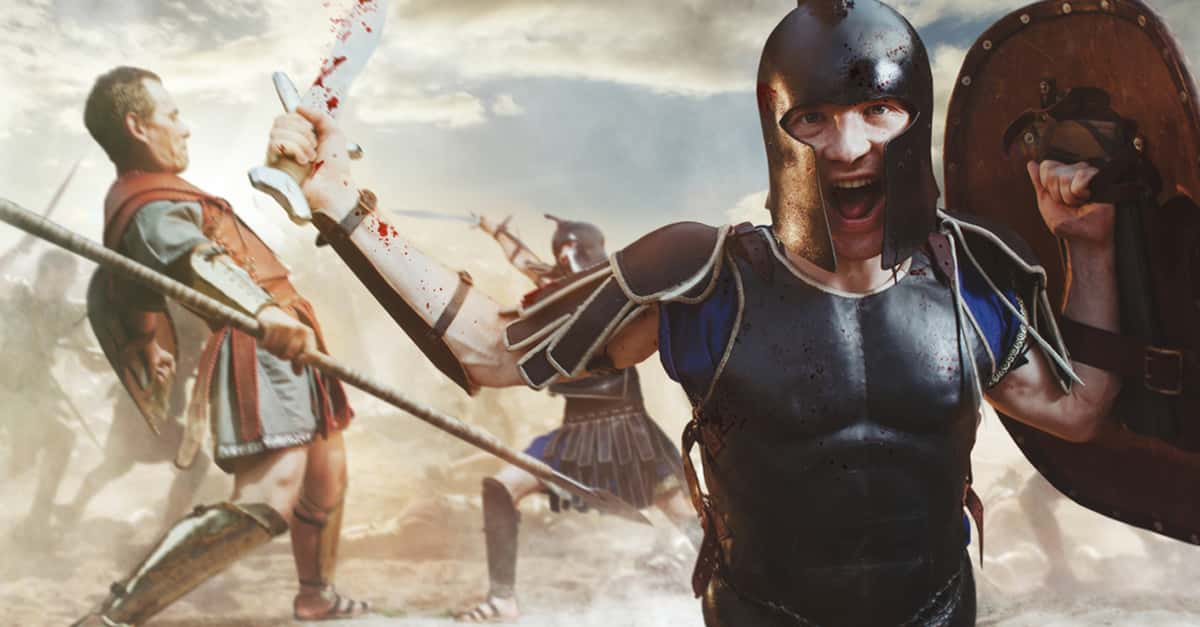Something about samurai seems to capture the imagination of each successive generation. These Zen warriors lived as a part of the military nobility that ruled feudal Japan for centuries. The samurai rose to the height of their power in the 12th century, with the beginning of the country’s first military dictatorship (known as the shogunate). The samurai would dominate Japanese government and society until the Meiji Restoration of 1868 led to the abolition of the feudal system.
Meanwhile (and perhaps more importantly) the group also came to develop their own unique cultural attitudes toward how a person might define and live a "good" life. They were renowned for their discipline, intelligence, and courage, and as a result their teachings are still commonly pursued today, in both everyday life and in modern Japanese martial arts. Here are a few things you might not know about these legendary fighters.
42. Live by the Code
The samurai followed a code known as bushido, which translates in English as “the way of the warrior.” It was (and is) similar in its ethics to the notion of chivalry in the European tradition. Interestingly, though, while the tenets of a bushido lifestyle were arguably observed by Samurai from their very beginnings as an order, the crystallized concept only developed between the 16th and 20th centuries. During that time period, scholars debated the exact parameters of the term, while acknowledging its roots in the already-ancient cultural practices that samurai had been practicing for centuries.
41. On Your High Horse
The bushido code varied throughout the centuries, but most aspects focused on preparing for a good death through personal care, maintaining honor, and often dying in battle. Other aspects of the code were a little more material: for example, at one point only high-class samurai were allowed to ride a horse, while lower-class samurai were barred the privilege.
40. What's in a Name?
In Japanese, samurai are often simply called bushi or buke. The term "samurai" is thought to come from the Japanese word "saburau," for "those who serve in close attendance to the nobility."
39. The Eight Virtues
In the 20th century, in an effort to unify the ideology of the samurai, Nitobe Inazo envisioned bushido as being made of up eight virtues. These were Righteousness, Heroic Courage, Benevolence or Compassion, Respect, Honesty, Honor, Duty and Loyalty, and finally Self-Control. So basically all things I am totally lacking in every way.
38. My Boss's Boss
In case you can't tell it yet, the samurai lived in a very hierarchical society. The samurai were an aristocratic class in Japan, but even samurai warriors served the daimyos, feudal lords who oversaw local regions. In turn, the daimyos served the shogun, who de facto ruled Japan through a military dictatorship known as a shogunate, even though the Emperor was the figurehead ruler.
37. The Last (Real) Emperor
The term "shogun" originates in the early Heian period, when Emperor Kanmu attempted to expand his rule and recruited local clan warriors to do so, calling the leaders of these clans "shoguns." Originally, this was only a temporary title and didn't carry much power. However, the power of the Emperor soon began to decline in Japanese society, opening the way for the rule of the shogun—and the samurai.
36. Bad Boys Bad Boys, Watchu Gonna Do
Some samurai lived on the edges of Japanese society. If a samurai didn't have a lord or master—either because their master had died or the samurai had fallen out of favor—they were known as a ronin, a Japanese expression for a "wandering man." Because a samurai was, according to the bushido, supposed to kill himself after his master's death or if dishonored himself, ronin were the bad boys of feudal Japan, and flouted social codes. They often worked as mercenaries.
35. Classy
Although many people believe that samurai were a small, elite warrior force akin to the modern-day Navy SEALS, they were actually an entire social class unto themselves. At the peak of their power, it's estimated that about 6-8% of Japan’s population were samurai.
34. The Clothes Make the Samurai
Samurai were style-makers, influencing the fashion of the era. Although their clothing was elaborate, every aspect of it was designed to fit their needs as warriors. Their regular outfit consisted of wide hakama trousers and a long-sleeved vest, collectively called a hitatare. These robes provided a wide range of movement. You see, the samurai fashion sense was just as sharp as their swords.

History's most fascinating stories and darkest secrets, delivered to your inbox daily.
33. The Hair up There
Perhaps the most distinctive aspect of samurai fashion was the chonmage hairstyle, which we recognize today as the topknot. Although the look does have an aesthetic appeal, the original intention of those who wore it was decidedly practical: the high knot of hair at the back of the head helped to keep a samurai's helmet on while engaged in combat.
32. A Comfortable Shave
In addition to the topknot, samurai would often partially shave their head to make it more comfortable to wear a helmet. Herein we find the difference between the hairstyle choices of a true samurai and the hilariously hipster guy you see in every single Starbucks in the world: while the samurai were more than willing to part with some hair (and style) in exchange for battle-preparedness, most of today's topknot wearers would sooner part with a limb than their carefully maintained locks.
Except Tom Cruise
31. Memories of Onna-Bugeisha
Although “samurai” is a strictly masculine term, there were Japanese female warriors in the ruling class who were counterparts to samurai. These women were called onna-bugeisha, and they would participate in combat along with their male counterparts.
30. No Blood Shed
Empress Jingu was said to be one of the first onna-bugeisha. After her husband died during combat, Jingu didn't just sit at home grieving, oh no. Instead, she led an invasion to Korea in 200 AD. Legend says that she and her armies defeated the Koreans without spilling even a single drop of blood. Although the veracity of this story, and even of Jingu herself, is certainly questionable, Jingu came to embody the ideals of the onna-bugeisha.
29. Just the Tip
The weapon of choice for a female samurai was the naginata, a spear with a curved, sword-like blade that was incredibly versatile, but also relatively light.
28. Battle of the Sexes
Although accounts of female samurai in historical texts were rare, recent research suggests that Japanese women participated in battles quite often. DNA tests revealed that 35 of the 105 bodies from the site of the Battle of Senbon Matsubaru in 1580 were female. Other historical battlefields yielded similar percentages.
27. Bust a Move
Despite the ornate detail of samurai armor, which can make the ensemble seem more like an elaborate stage costume than functional armor, each piece served an explicit purpose. Unlike the armor of a European knight, the samurai armor was designed for mobility. As they say, it’s not proper samurai armor if you can’t pull off a great game of Dance Dance Revolution.
26. Hide Your Head
The kabuto helmet was perhaps the most complicated part of a samurai’s armor. Its bowl was made of riveted metal plates, the face and brow were protected by armor that tied around behind the head and under the helmet, and the neck guard protected the wearer from arrows and swords. This is good, because there’s not much that can ruin a samurai’s day more than an arrow to the neck.
Many samurai helmets featured ornaments and attachable pieces, including masks with demonic features that served both to protect the face and frighten the enemy.
25. Just for the Neck of It
The neck guard on Darth Vader’s helmet was actually inspired by the samurai’s kabuto helmet. Vader himself, on the other hand, was inspired by the loss of a great love. And all his limbs. In a volcano.
24. Deadly Things Come in Small Packages
Although their armor made them seem imposing, samurai were actually fairly small humans, with the average 16th century samurai being 5’3” to 5’5” in height.
23. Straight to the Point
The samurai originally carried a sword called a chokuto, essentially a slimmer and smaller version of the straight swords used by medieval European knights.
22. Rock Those Curves
As sword-making techniques progressed, the swords that the samurai used became more curved, eventually evolving into the well-known katana, possibly one of the most famous swords in the world.
21. Double Trouble
Katanas were usually paired with a smaller blade, a wakizashi. If a katana and a wakizashi were paired, it was a sign that the wearer might be a samurai. This bladed pair was known as a daisho, or "big-little."
20. Fight Smarter
Although samurai did fight with their katanas, swords were not the only weapons at their disposal. As heroic single combat gave way to intelligent group tactics, spears became a more commonplace weapon. Similarly, samurai soon came to adopt the yumi, an incredibly large variety of longbow that would often stand taller than its user. These bows were typically constructed from laminated bamboo, and were designed to be asymmetrical. Theories as to why they were built this way abound, but one of the more compelling justifications is that the added springiness made it possible for a talented archer to shoot while crouched or kneeling.
19. This Is My Rifle
When gunpowder was invented, samurai abandoned the bows in favor of firearms and cannons, with their long-distance weapon of choice being the tanegashima, a matchlock rifle popular among late-16th century samurai and onward.
18. That Special Student-Teacher Bond
Like the Spartans, samurai were very open minded when it came to same-sex relations. In fact, the practice, known as wakashudo, of an experienced samurai forming a relationship with a youth-in-training was encouraged and extremely common.
17. The Greatest Weapon Is a Good Education
The majority of those in the samurai class were very well-educated, with levels of literacy and mathematical skills being quite high, especially in comparison to Europeans of the same time period. You could say they were well-versed in the three Rs: readin’, ‘rithmetic, and rippin’ out the hearts of their enemies.
16. Arts and Crafts
In addition to reading and math, the bushido code also dictated the samurai be well-versed in the arts, and they participated in a number of artistic endeavors including poetry, rock gardens, ink paintings, flower arranging, and tea ceremonies. And before you make any snarky comments about flower arranging, just remember that these guys have swords and know how to use them.
15. Mudbloods
While the Japanese were notoriously judgmental when it came to purity of race, the samurai were noticeably hairier and lighter-skinned, suggesting that they may have descended from an ethnic group called the Ainu, who, ironically, were considered inferior by the Japanese and were often the subject of discrimination. It’s amazing what rigorous martial training and being armed to the teeth can do to inspire a better opinion of you.
14. Plenty of Fish
Samurai typically had marriages arranged by a third party who was of the same or higher rank. Most samurai married women from samurai families, but lower-ranked samurai could marry commoners. In those instances, a dowry was brought by the woman to eliminate debt, set up the new household, and to buy a ton of sushi.
13. Split Decisions
Divorce was permitted, but rare, because firstly, it would be embarrassing for all involved, and also because the samurai would have to return the dowry. Nothing prevents divorce more like having to give refunds.
12. The Last Samurai
The final samurai battle was arguably in 1867 during the Satsuma Rebellion in the Battle of Shiroyama. The uprising had come about in part because of the rebellion against the Tokugawa shogunate, and the Meiji Restoration that came out of these rebellions would eliminate the samurai class.
11. The Pen Is Mightier Than the Sword
Because of their education, many of the samurai set down their swords and picked up pens after the Restoration, making the transition from warriors to reporters and writers, with some of them even setting up newspaper companies. They understood, even then, that you could cut deeper with the truth than with a sword.
10. Hanzoff My Shogun
Hattori Hanzo is one of the most famous samurai of all time, and is known for saving the life of the future great shogun Tokugawa Ieyasu, leading him through enemy territories, some say with the help of local ninjas. The samurai was well-rewarded, and became a close confidante of Tokugawa when he rose to power as shogun.
9. I'm on Top
At the height of the shogunates, one of the most famous shoguns was Tokugawa Ieyasu, who founded, and first headed, the Tokugawa shogunate. It would be the last shogunate of Japan, and lasted a whopping 268 years, from 1600 to the Meiji Restoration in 1868.
Tokugawa was a wise and patient ruler, and helped to unify Japan, but he also had a bloody streak. A cunning warrior, he once ordered the executions of his own wife and son to send a political message. In another instance, Tokugawa made sure to hunt down all survivors of an attack, including a mere eight-year-old boy.
8. Die by the Code
If a samurai failed and was captured by the enemy, they were expected to commit ritual suicide in a process known as seppuku, which involved self-disembowelment by his own hand followed at times by decapitation by an attendant. This was considered an extremely honorable way to die...albeit somewhat messy. As historian Stephen Turnbull put it, "In the world of the warrior, seppuku was a deed of bravery that was admirable in a samurai who knew he was defeated...or mortally wounded."
7. An Evening's Entertainment
However, there were even darker uses for seppuku. It was also used as a form of capital punishment if a samurai had gone against the bushido or shamed himself in some way. This would bring about a long ceremonial seppuku, with the disembowelment often being done publicly in front of a large group of spectators.
6. The Girls Want in on the Fun
Women, particularly those women married to samurai and/or who were of the samurai class, also practiced ritual self-sacrifice if their husbands had brought dishonor to their family or if an enemy was about to descend on them. In these cases, many Japanese women preferred to cut their own throats for a quick and sure death, and often tied their knees together before the deed so that they would fall in a graceful position. Always gotta think of those angles.
5. Sisterly Love
One of the most famous female warriors of the samurai class was named Nakano Takeko. Nakano was the eldest daughter of the family, and began training in martial arts from an extremely young age to learn the way of the warrior. In the Battle of Aizu in 1868, Nakano was the leader of the independent women's army, or the Joshitai.
Later in the same year, when she was leading the Japanese Imperial Army, she suffered a mortal wound from a shot in the chest. Refusing to let her enemies capture her head as a trophy, Takeko asked her sister Yuko to cut off her head and bury it. Nakano's head now rests under a pine tree at Hokai Temple in Aizubange, Japan.
4. Revenge Is Best Served Bloody
Although ronin were often outcasts in feudal Japanese society, one group of ronin committed a feat so great and so loyal, it cemented their place in the legends of the samurai. The 47 Ronin were a rag-tag group of hard-hearted men who sought revenge after the death of their master. In the 18th century, a daimyo named Naganori Asano was forced to commit seppuku after he assaulted a court official named Yoshinaka Kira.
Naganori's band of now-bereft samurai waited and plotted for over a year before exacting their revenge, killing Yoshinaka. Of course, after they did so, they were finally allowed to perform seppuku in the name of their honor and that of their dead master. Even though 47 men died that day, they were quickly immortalized in Japanese history.
3. East Meets West
Though Western samurai were extremely few and far between, we do know of a small handful of men who were granted the privilege to become samurai and take up the way of the warrior. One of them was William Adams, who started off as an English sailor working for the Dutch East India Company. In 1600, his ship was one of the only few vessels to survive the journey to Japan, and soon after Adams and his second mate Jan Joosten settled in the country. Adams became an advisor to the reigning shogun, Tokugawa Ieyasu, and he (along with Joosten) was soon given the right to call himself a samurai—but it came at a high cost.
Adams had a wife and children back home in England, but Tokugawa refused to let him leave Japan, re-naming Adams as "Miura Anjin" and declaring that "William Adams" was dead and that his old wife was effectively a widow. Adams did indeed stay in Japan, and even remarried, but he never forgot his widow, and still sent her payments to help support her across the ocean.
2. Daisho Days
Although they were not official samurai, other Westerners were granted the right to wear the daisho, or the two swords (the katana and the wakizashi). John Henry Schnell, a man of German descent who became a military instructor in the late 1800s, and Eugene Collache, a French Navy officer who fought for the Ezo Republic again in the late 1800s, both earned the privilege to carry the swords.
1. Facing Down Your Demons
Miyamoto Musashi is one of the most famous samurais in history—and he was a ronin, serving no lord but himself. He was a master of double-bladed swordmanship, and went undefeated in an astonishing 61 duels throughout his life.
Miyamoto was a disciplined fighter, but he was also cunning. Around 1614, he was called to a duel with the fearsome Sasaki Kojiro, a man known by the terrifying moniker "The Demon of the Western Provinces." Sasaki regularly wielded an enormous Japanese broad sword, but Miyamoto was no slouch. He arrived to the duel late (some say to unnerve his opponent) and then handily beat Sasaki with only a wooden training sword.
Sources: 1, 2, 3, 4, 5, 6, 7, 8, 9, 10, 11, 12, 13, 14, 15, 16, 17, 18, 19, 20, 21, 22, 23, 24, 25, 26, 27, 28




















































